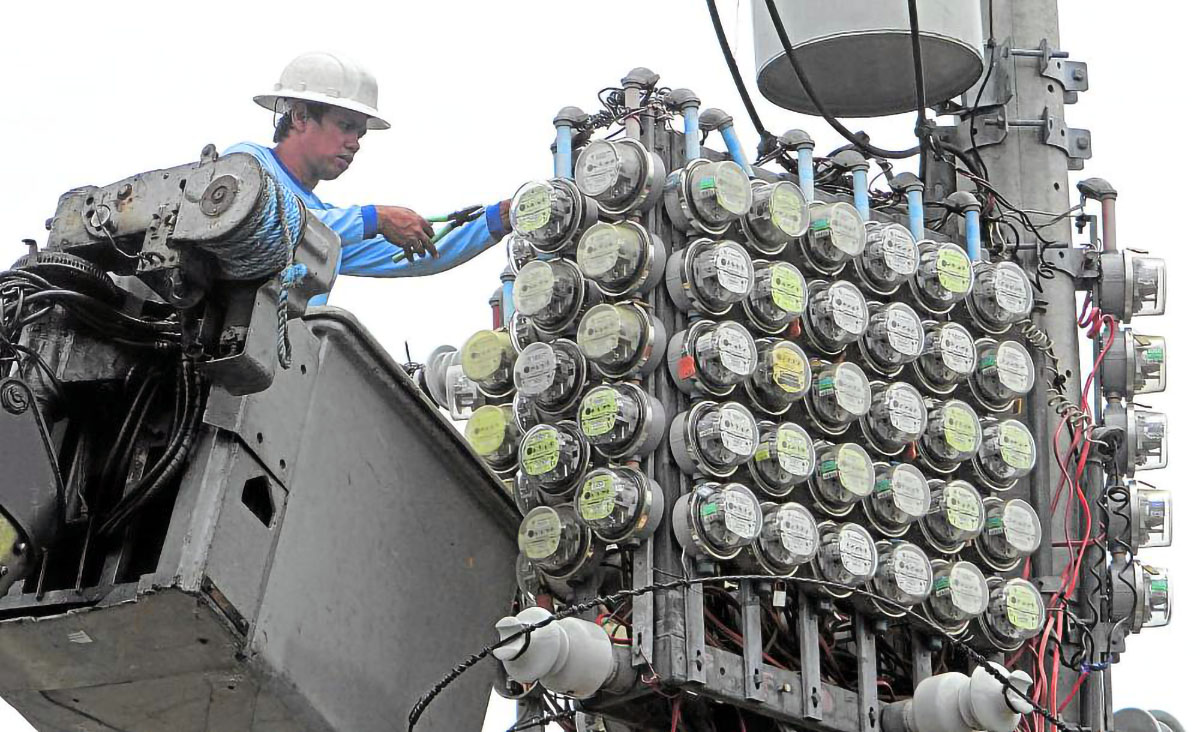
STILL INSUFFICIENT POWER A Meralco worker inspects electric meters in San Andres, Manila.—INQUIRER FILE PHOTO
Rotating power interruptions that lasted up to one and a half hours hit the National Capital Region (NCR) and nearby provinces on Thursday evening, affecting nearly 490,000 customers of power distributor Manila Electric Co. (Meralco).
In a statement on Friday, Meralco said it was constrained to implement rotational power interruptions or manual load dropping (MLD) in portions of Metro Manila and the provinces of Bulacan, Cavite, Laguna, Rizal and Pampanga.
Meralco said around 487,000 customers were affected but it managed to fully restore all electricity services at 11:55 p.m. on Thursday around the time grid operator National Grid Corp. of the Philippines (NGCP) lifted the red alert status.
Even if NGCP did not issue a red alert on Friday, Meralco said it advised Interruptible Load Program (ILP) participants to be on standby for possible disconnection from the power grid to help ease the demand.
“We thank our affected customers for their understanding. We also express our appreciation to ILP participants in the Meralco franchise area that de-loaded yesterday for their help in managing the situation,” said Joe Zaldarriaga, head of corporate communications and spokesperson for Meralco.
To manage the demand in its coverage area, Meralco implements an MLD in case a red alert is raised, in which electricity is cut in areas at a specific time.
Remedial measures
In the event that the power supply is thin, the power company activates the ILP, a voluntary, demand-side management program of the Energy Regulatory Commission.
Under this program, big customers are requested to use their own generator sets instead of relying on electricity from the grid. In turn, they are compensated for any price difference should they use their own generators.
Meralco implemented an MLD as electricity supply in Luzon and the Visayas hit critically low levels on Thursday as many power plants were unavailable to meet the spike in demand amid the hot weather.
The NGCP, which operates the country’s transmission backbone, placed Luzon and Visayas grids under red and yellow alerts for several hours.
It said that in the case of Luzon, the operating margin should be 668 megawatts, equivalent to the capacity of the largest power plant in the populous island group, to avoid red or yellow alerts.
No red alerts were issued on Friday but NGCP hoisted a yellow alert in the Luzon grid from 1 p.m. to 11 p.m. while in the Visayas grid, a yellow alert was up from 9 p.m. to 10 p.m.
Power supply alerts
A red alert means the power supply is insufficient to meet consumer demand and the regulatory requirements of the transmission grid. This might lead to power interruptions.
Under a yellow alert, the operating margin is not enough to meet the contingency requirement of the transmission grid.
The available capacity in Luzon is 14,331 MW, resulting in a narrow margin as the peak demand is projected at 13,691 MW.
In the Visayas, the available capacity is pegged at 2,681 MW while peak demand is 2,312 MW, leading to a thin margin.